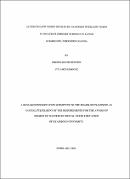Access to low vision devices by learners with low vision in inclusive primary schools in Lango sub-region, northern Uganda
Abstract
The purpose of the study was to investigate access to low vision devices by learners with low
vision in inclusive primary schools in Lango sub-region. The study was conducted within three
districts and one municipality within the region. The objectives of the study were; to examine the
low vision devices available for use by learners with low vision, establish the knowledge of
learners with low vision in using low vision devices; and to investigate the challenges faced by
learners with low vision in using low vision devices. A qualitative approach with in terpretivist
paradigm and a case study design was used. A sample of 28 participants was selected from a
population of 121 people. Data was collected using interview schedules, questionnaires and
focus group discussion (FGDs) guides. Interviews were used to collect data from headteachers,
questionnaires used to collect data from teachers; and focus group discussion guides used to
collect data from learners with low vision. Ethical . considerations were observed by ensuring
confidentiality of the participants. Data from different instruments were presented in a tabu lar
form. Interpretation and analys is of results were done and di scussions plus recommendations of
the findings were made. The study found that, " learners with low vision and their teachers had
inadequate knowledge of using some low vision devices and no low vision services were being
done in schools to determine the kind of low vision devices to be used. Some schools were
found to have enrolled more learners with low vision compared to the number of devices and
trained teachers that they had. The study concluded that; most devices used by learners with low
vision in inclusive primary schools were non-optical devices like audio books, brailed materials,
large prints on boards and large print books. The study also concluded that; learners with low
vision and teachers of learners with low vision had knowledge of using only non-optical devices,
but had difficulties using some optical and electronic devices. The study recommended that;
teachers and learners with low vision be trained on the use of all low vision devices, and that;
functional vision assessment be carried out to determine the kind of low vision devices to be
used by learners with low vision.

